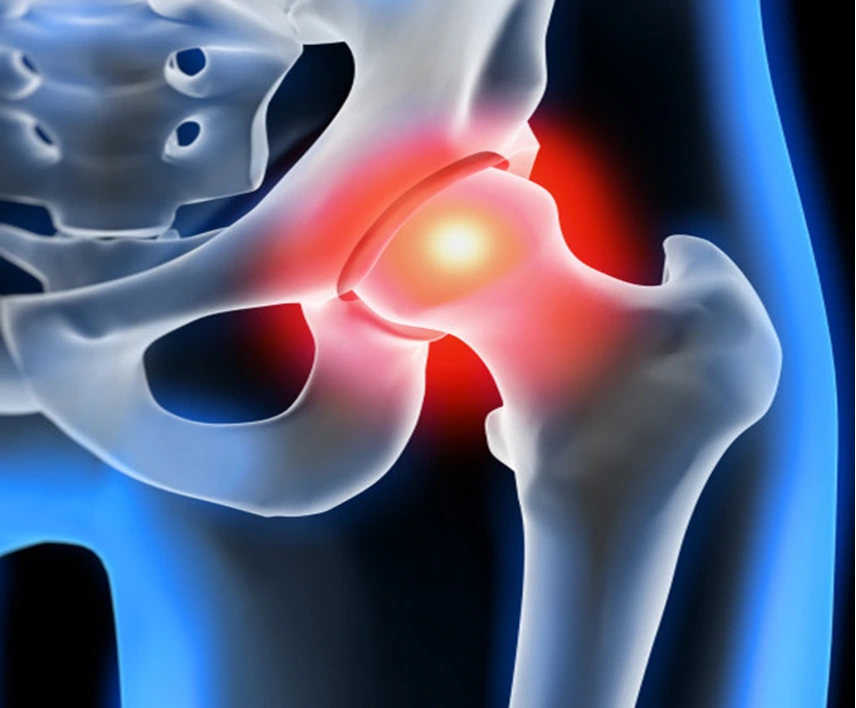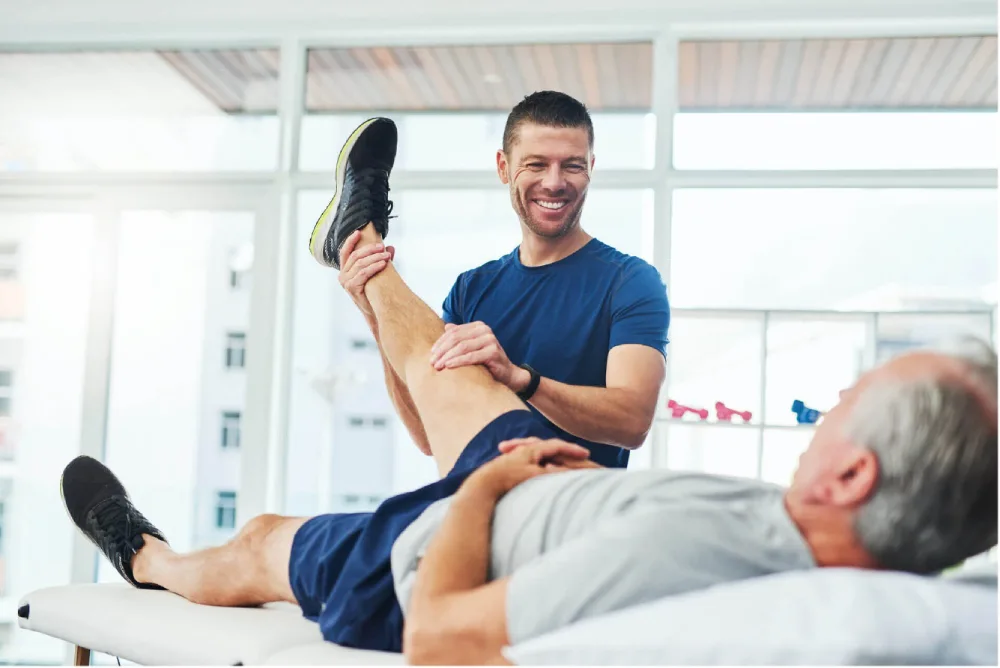Hip osteoarthritis is a degenerative joint disease that causes pain, stiffness, and limited movement due to the deterioration of the hip joint’s tendon. Physiotherapy is essential for managing hip osteoarthritis because it uses a variety of treatments to improve function and reduce pain. The origins, signs, and physiotherapy management of hip osteoarthritis therapies are examined in this article, along with the advantages and self-management techniques supported by research.

What Are Causes of Hip Osteoarthritis?
There are different causes of hip osteoarthritis including:
- Aging: As people age, their hip joints’ cartilage naturally experiences more wear and tear, which can result in hip osteoarthritis.
- Genetics: Individuals may be predisposed to hip osteoarthritis due to specific hereditary characteristics, which may impact how their joints react to age and environmental stressors.
- Joint injuries: A history of hip trauma, such as fractures or dislocations, can alter the natural anatomy of the hip joint and raise the risk of osteoarthritis in later life.
- Obesity: Carrying too much weight puts extra strain on the hip joint, hastening the deterioration of cartilage and the onset of osteoarthritis.
- Joint abnormalities: People who have hip dysplasia or abnormal bone growth, for example, are at risk of developing hip osteoarthritis due to congenital or developmental abnormalities in the hip joint.
5 Common Symptoms of Hip Osteoarthritis
People who suffer from osteoarthritis symptoms such as: will experience some
- Hip discomfort: People who have hip osteoarthritis frequently have hip joint pain, which can get worse with movement and become more severe.
- Stiffness: One of the most prevalent symptoms of hip osteoarthritis is stiffness in the hip joint, especially after periods of inactivity or first thing in the morning.
- Reduced range of motion: Osteoarthritis can limit the hip joint’s range of motion, making it harder to carry out daily tasks and resulting in a restricted range of motion.
- Swelling: Hip joint inflammation can result in swelling and soreness in the afflicted area, which can worsen pain and limit movement.
- Walking difficulties: Hip osteoarthritis can cause discomfort and stiffness in the hip joint, which can make it difficult to walk, especially for extended periods or on uneven surfaces.
Hip osteoarthritis can be caused by aging, genetics, joint injuries, obesity, and joint abnormalities like hip dysplasia. Common symptoms include hip pain, stiffness, reduced mobility, swelling, and difficulty walking.

Read more: Revealing Bladder Health: A Guide To Physical Therapy Solutions
Role of Physiotherapy in Managing Hip Osteoarthritis
Physiotherapy management of hip osteoarthritis aims to improve the function and quality of life for individuals. Reducing pain, increasing joint mobility, and strengthening and prolonging muscle strength are the objectives of physical therapy. To accomplish these goals, methods like manual treatment, strengthening exercises, range of motion exercises, cardio activities, and patient education are frequently used.
Strategies for Effective Management of Hip Osteoarthritis
A complicated strategy is used to manage hip osteoarthritis to reduce symptoms and enhance function. Usually, this includes:
- Pain management:
It involves using methods to lessen hip joint pain and inflammation, such as medication, physical therapy, and joint injections.
- Exercise:
Including activities to increase hip joint strength, flexibility, and range of motion. This could involve exercises like weight training, low-impact aerobics, and stretching.
- Weight management
It is the process of keeping a healthy weight to lessen the strain on the hip joint and delay the onset of osteoarthritis.
- Assistive Devices:
Increasing mobility and supporting the hip joint by using orthotics, braces, or canes.
- Lifestyle Adjustments:
Making lifestyle adjustments helps lessen the strain on the hip, such as cutting back on high-impact activities, straightening up your posture, and employing the right body mechanics
Instruction and Techniques for Self-Management
For people with hip osteoarthritis to effectively manage their illness, patient education is essential. Patients receive education from physiotherapists regarding their disease, appropriate body mechanics, and pain management techniques. Self-management tactics, such as lifestyle changes, home workout regimens, and pain relief methods, support physiotherapy treatments and give patients the ability to take charge of their health.
Physiotherapy for hip osteoarthritis aims to enhance function and reduce pain through techniques like exercise, pain management, and patient education. Strategies include exercises, weight management, assistive devices, lifestyle adjustments, and patient education for effective self-management.

Challenges and Limitations of Hip Osteoarthritis Physiotherapy
Ensuring adherence to exercise regimens and effectively managing pain and stiffness are two of the challenges and limits that are associated with physiotherapy for hip osteoarthritis. Limitations may also result from the condition’s progressive nature, which in more advanced cases may call for additional measures like surgery. Moreover, the necessity for continuous care and individual differences in response to treatment present continuous obstacles in maximizing results for patients with hip osteoarthritis.
Conclusion
Physiotherapy is essential for controlling hip osteoarthritis since it can reduce pain, improve function, and improve quality of life. By providing patients with evidence-based therapies and patient education, physiotherapists enable patients to effectively manage their conditions and attain the best possible outcomes. A multidisciplinary approach and an emphasis on early intervention are crucial components of holistic care for individuals with hip osteoarthritis. The goal of future physiotherapy research is to enhance treatment plans and provide better results for those who suffer from this paralyzing illness.
Physiotherapy for Hip Osteoarthritis in West Vancouver Clinic
Physiotherapy at West Vancouver Physio Clinic is an essential part of treating hip osteoarthritis, with the goals of reducing pain, increasing range of motion, and improving patients’ overall quality of life. Our committed group of physical therapists applies research-backed methods that are customized to each patient’s need.
We attempt to decrease joint stiffness, increase range of motion, and strengthen surrounding muscles by combining manual therapy, focused exercises, and patient education. To reduce stress on the hip joint, our all-inclusive approach also offers advice on lifestyle adjustments, such as changing one’s activities and using one’s body mechanics correctly. Our goal is to maximize outcomes and restore function for individuals with hip osteoarthritis by providing them with the knowledge and resources they need to manage their condition effectively. Book an acupuncture West Vancouver appointment through the Radial website.